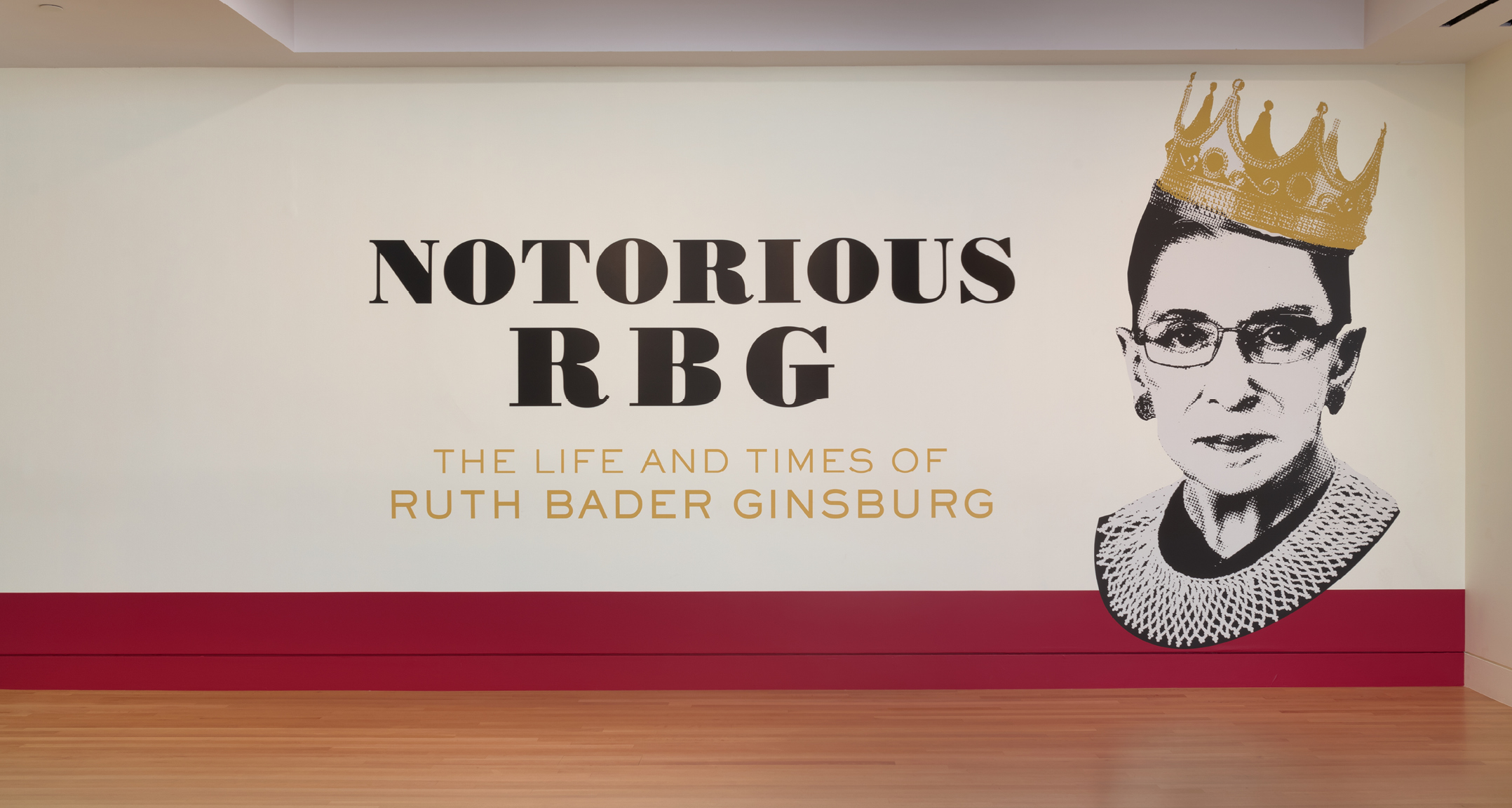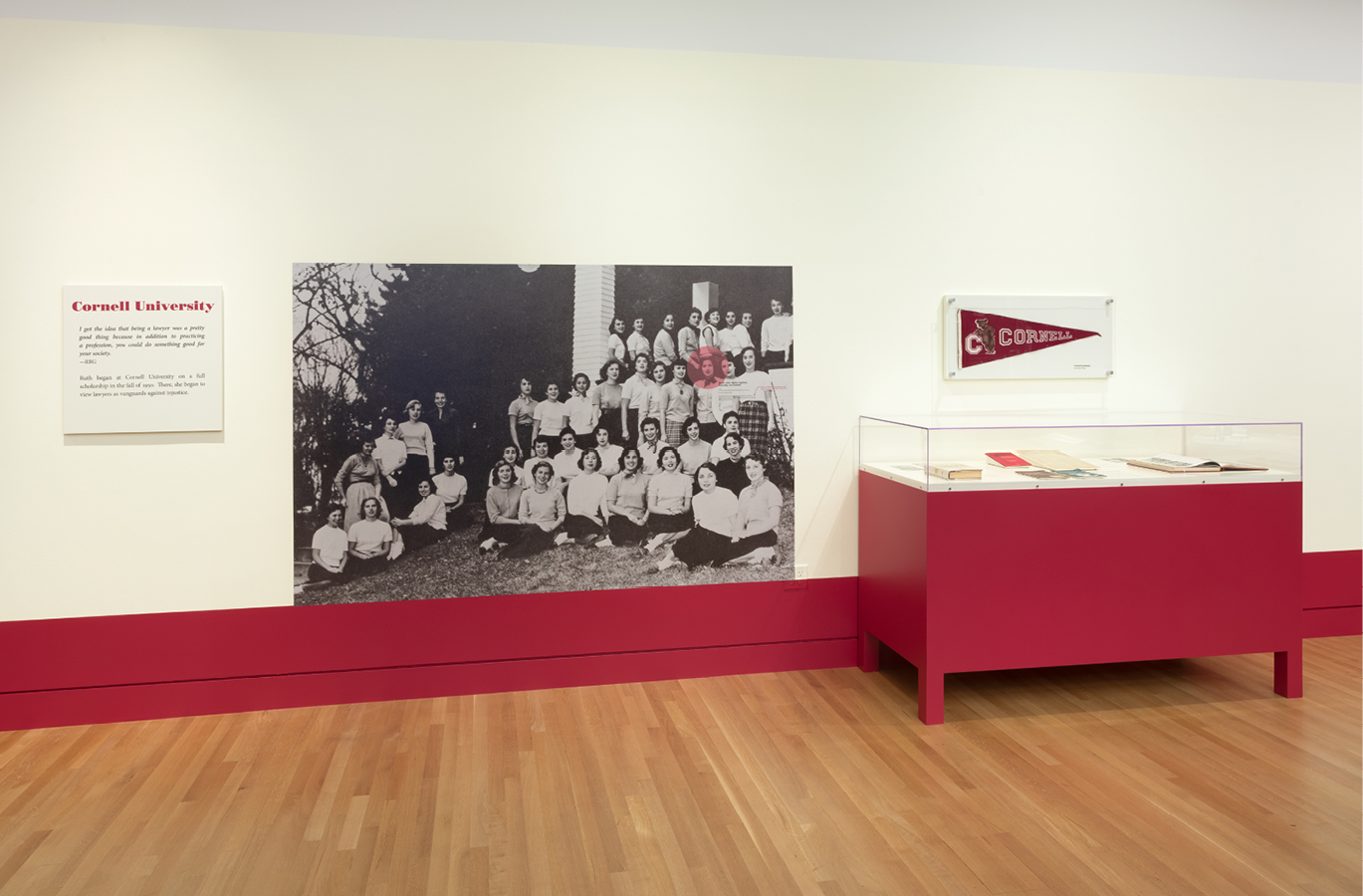Mo Injustice, Mo Problems

Photos by Robert Wedemeyer
At the age of 86, United States Supreme Court Justice Ruth Bader Ginsburg has an unprecedented resume. Equal rights pioneer, glass-ceiling smasher, champion for female empowerment, academic, jurist, devoted partner and mother, outspoken critic of systemic inequities, cancer survivor (again and again), meme inspiration, and frankly, an icon in our midst.
When she was named an assistant professor of law at Rutgers University in 1963, she became one of an elite group of fewer than 20 women in United States history to ever hold such a position at an accredited law school in the United States. Nine years later, she became Columbia University’s first tenured female law professor. Soon, Ginsburg’s contribution to legal jurisprudence would become well-known beyond her unique accomplishments as a woman in what was, at the time, distinctly (and oppressively) a man’s world. Between 1972 and 1980, she filed briefs in nine of the major sex discrimination cases decided by the Court and personally argued six of them, winning all but one. She also filed amicus curiae (or “friend of the court”) briefs in fifteen related cases. In 1980, Ginsburg left Columbia University after being appointed by President Jimmy Carter to become a judge on the U.S. Court of Appeals for the District of Columbia Circuit and the rest…well, the rest is the stuff of legend. Only the second women (and sixth person of Jewish affiliation) to ever be appointed to the United States Supreme Court, Justice Ginsburg’s life has been documented in detail, most recently in a blog-turned-book-turned-movie all under the moniker “The Notorious RBG.” Now, the whole Megillah of Ruth (if you will) is the basis of a new museum exhibit organized by the Skirball Cultural Center in Los Angeles, but making its East Coast debut October 4 at the National Museum of American Jewish History in Philadelphia, Pennsylvania.
Based on the aforementioned (and New York Times bestselling) book of the same name and created in partnership with its authors, Irin Carmon and Shana Knizhnik, the Notorious RGB exhibition promises to “take a deeply personal journey through historic change with an entertaining yet rigorous look at the life and work of Ruth Bader Ginsburg (RBG) and the Supreme Court.” And what a life and work that entails. As those familiar with the “RBG” phenomenon – from omnipresent T-shirt to the hundreds of little children remarkably dressed as a Justice for Halloween to the hilarious impression by Kate McKinnon on Saturday Night Live – there is more to the diminutive jurist than just a brilliant legal mind or her storied career. To many, RBG is emblematic of the fight we all, at one point or another, wish we would have or could have taken – to be the powerful and persuasive voice for the underdog in a world that growingly seems unfair. Whatever your political opinion, it is a universal truth that this tiny and now frail woman has represented, far beyond her clients and even a perspective form, the bench. In a word, RBG has come to symbolize “perseverance;” and she has done so in a spectacular way, well beyond any reasonable measure of time for moral values to which she has remained true.

As such, there is much to draw upon and more to offer in this museum quality exhibit. As those familiar with the work of the two authors who first dubbed Ginsburg “the Notorious RBG,” there is, luckily, a great deal of documentation of her life – much of which is incorporated into the American Jewish History display. Her upbringing and schooling, her early career, as well as her wonderfully romantic and professional relationship with her lawyer-husband, Marty Ginsburg, who passed away in 2010 at the age of 78, on the verge of their 56th wedding anniversary, are all going to be highlighted. Then, of course, so too will all her arguments in front of and as an associate justice of the United States Supreme Court, not to mention a host of wonderfully charming interviews depicting her challenges, triumphs, tragedies, and an astonishing daily work out regiment despite (and possibly as a response to) her many bouts with different cancers over the years. Indeed, her endurance as a result of steady exercise has become an inspiration to many, and more than a few gentle appeals to a higher power each day across the nation that she be given the strength to keep it up – maybe forever! In fact, if you listen closely at Friday night services, more than a few congregations will slip her name into the Mi Shebeirach prayer for healing.
To that last point, it goes without saying that many people in today’s heated political climate are hoping that she does continue to find the strength to carry on, thus avoiding the possibility of a battle to replace her on the Supreme Court that could very conceivably rip further at the core of civility and hope that our nation has been struggling with as the world seems to be growing more and more partisan. Again, whatever your views of her views, she is undeniably a powerful figure who would be hard to replace by anyone – liberal, conservative, or otherwise.
Nonetheless, and despite the undertones of politics, the American Jewish History museum’s take on this important Jewish American will be more of a celebration through archival photographs and documents, historical artifacts, contemporary art, media stations, and gallery interactives. It explores the American legal system and civil rights movements through the lens of Justice Ginsburg’s personal experiences and public service. The exhibition will endeavor to entertain and educate with immersive 3-D environments bringing key moments in Justice Ginsburg’s personal and professional story to life, such as recreations of Justice Ginsburg’s childhood Brooklyn apartment and of the Supreme Court bench, where visitors can take a seat and imagine making their own opinions heard. Visitors will also get to see rare family snapshots and other materials, including some of Marty’s favorite recipes as the accomplished amateur chef of the Ginsburg household. (One can only hope that the curators may add at the last minute a mock exercise room from the Supreme Court chambers with an animatronic Ruth Bader Ginsburg wearing her trademark eyeglasses and lifting weights.)
Finally, and cleverly folded into the exhibit in a sort of meta-element, patrons will be treated to a discourse on how the moniker “the Notorious RBG” not only came to be, but how it has seemed to resonate with the public to the point where in any large group of idealistic young people, you may just find an RBG tattoo (the exhibit even includes an array of photos of people who have, in fact, permanently inked her image into their skin). An obvious homage to the nickname of her fellow Brooklynite and kindred rebel spirit and wordsmith, Christopher “Biggie Smalls” Wallace – aka “the Notorious B.I.G.” – perhaps, as people respected Biggie’s essential contribution as changing the world through rap, so, too, do they respect Ginsburg’s accomplishments to do the same (in the same hard core way) through her judicial opinions. Honestly, it’s not a stretch to see the lyrical elegance and power of her words from voting rights cases like Shelby County, Alabama v. Holder. In that one, Ginsburg presented an uncompromising dissent to keep the 1965 Voting Rights Act in place, painstakingly reconstructing the history of violent and nonviolent suppression of black voting rights after the Civil War. She summed up the struggle by writing, “Early attempts to cope with this vile infection resembled battling the Hydra. Whenever one form of voting discrimination was identified and prohibited, others sprang up in its place.” Alas, it makes sense that her words resonate like rap lyrics – busting out against oppression with colorful and visceral phrases. Undaunted by the make-up of the current United States Supreme Court, where she’s in the minority and often relegated to dissent opinions, Ginsburg keeps it real, ready to metaphorically bang any MC, er, conservative justice, easily. Busily.
“Notorious RBG” will be on view at the National Museum of American Jewish History from October 4, 2019 through January 12, 2020. The presenting of this special exhibit kicks off the museum’s celebration of the 100th anniversary of the passing of the 19th Amendment, granting women the right to vote.

